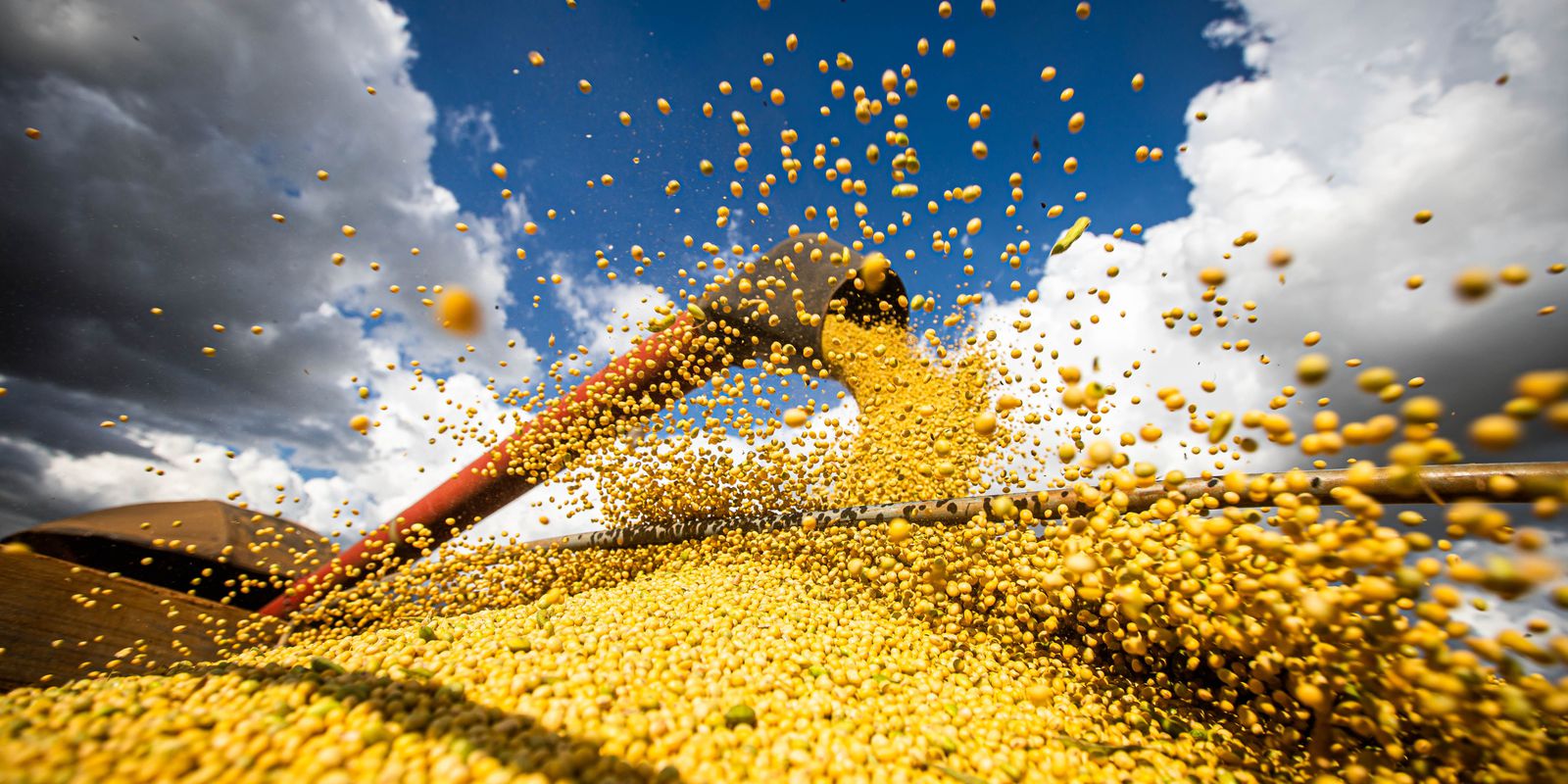Brazilian grain production is expected to reach 271.447 million tons, according to the 11th Grain Harvest Survey released today (11) by the National Supply Company (Conab).
If the result of the 2021/22 season is confirmed, it will represent an increase of 15.9 million tons (or 6.2%) compared to the harvest recorded in the 2020/21 harvest.
“With regard to first-crop crops, with the exception of corn, all [as safras] are already harvested. The second crop crops are harvesting quite early, and the third crop, as well as the winter crops, are close to the conclusion of planting”, said the president of Conab, Guilherme Ribeiro, when announcing the numbers.
According to him, the winter crop should be planted in the first half of August. “For wheat, the main crop, a record production of 9.2 million tonnes is estimated,” he added.
corn: record
According to Conab, the corn harvest should reach 87.4 million tons in the 2021/22 harvest, of which 25 million tons are from the first harvest. “Second crop corn harvest continues to advance and exceeds 79% of the planted area”, details Conab.
“If the estimated volume for the second corn crop is confirmed, the value represents the highest production recorded in the historical series”, he adds, informing that the projection already considers the reduction in productivity, in comparison with the previous survey.
This area reduction is caused by the lack of rain and pest attacks in “important producing regions”, especially in Paraná. “In relation to the previous cycle, the increase in production reached 44%”, informs the survey.
soy and rice
Projections for the first soybean crop estimate a production of 124 million tons, while rice is estimated at 10.8 million tons.
“The result of the oilseed [soja] is a reflection of the severe drought that occurred at the end of 2021 in the south of the country and in part of Mato Grosso do Sul. The weather also influenced rice productivity, which, combined with a smaller planted area, had the harvest reduced by 8.4% in relation to the previous harvest”, explains Conab.
Cotton
The company classifies the current weather conditions for cotton production as favorable, which places the fiber among the highlights of the 11th survey. With work already completed on at least 67% of the cultivated area, this year’s harvest is expected to be completed in September.
“If, on the one hand, the climate affected productivity in some crops due to water stress, on the other hand, the dry weather observed in most producing regions positively influenced the quality of the final product”, says the survey. The expectation is that 2.74 million tons of cotton plume will be harvested. The number is 16% higher than that recorded in the last harvest.
Beans and winter products
The second bean crop is, according to Conab, “practically finished, with only a few plots remaining to be harvested in the first half of August”. The final harvest is expected to be approximately 1.36 million tons (an increase of 19.5% compared to the previous harvest), despite the climatic fluctuations recorded during the cycle.
“There was a reduction in the planted area compared to 2020/21, especially due to the great competition with the cultivation of corn and wheat, cereals that expanded their areas of coverage in this cycle”, informs Conab.
Wheat stood out among winter crops, with a record production of 9.2 million tons. “This expected increase in production of 19.3% is a reflection of a larger planted area, with significant growth in Rio Grande do Sul – reaching 18% in the state of Rio Grande do Sul compared to the previous harvest –, combined with an expectation of an increase in productivity”, says the survey.
Marketplace
Regarding the projected market for Brazilian production, Conab once again highlights wheat from the 2021/2022 crop (business year from August 2021 to July 2022), which ended with ending stocks totaling 722.6 thousand tons.
“Other adjustments were made to the export and import data ended last month, estimated at around 6 million tonnes and 3 million tonnes, respectively. For the harvest that begins, the expectation is that the stock will end at 1.6 million tons”, adds the company.
Conab also changed the soybean supply scenario. “The ending stocks of the oilseed were adjusted to 7.66 million tons, as indicated by the stock survey released by the Brazilian Institute of Geography and Statistics (IBGE). This increase in ending stocks for the 2020/21 crop also led to expectations of a higher carry-over stock in the 2021/22 crop, from 4.65 million tons to 5.98 million tons.”
Another revised upward forecast was for soybean oil exports, to 2.1 million tonnes. The change stems from “strong sales” to the foreign market between January and July this year; high international prices; and positive crush margins.
In the case of corn, there was a “small adjustment in domestic consumption”, compared to the last survey. Conab also highlighted the 80.2% increase in grain exports, with an estimate of 37.5 million tons being exported.
“Final stocks also tend to increase by 25.3% compared to the previous crop, which indicates the recomposition of the internal availability of the cereal at the end of the current crop year”, adds Conab.
With low availability of product stocks, cotton exports showed a “slow pace in July this year”, month in which 19.68 thousand tons of the product were shipped.
The volume is 68.63% lower than the month of June, and 66.2% lower than the same period last year. “The situation should only change in October, when the new crop will be available for sale”, says Conab.

















